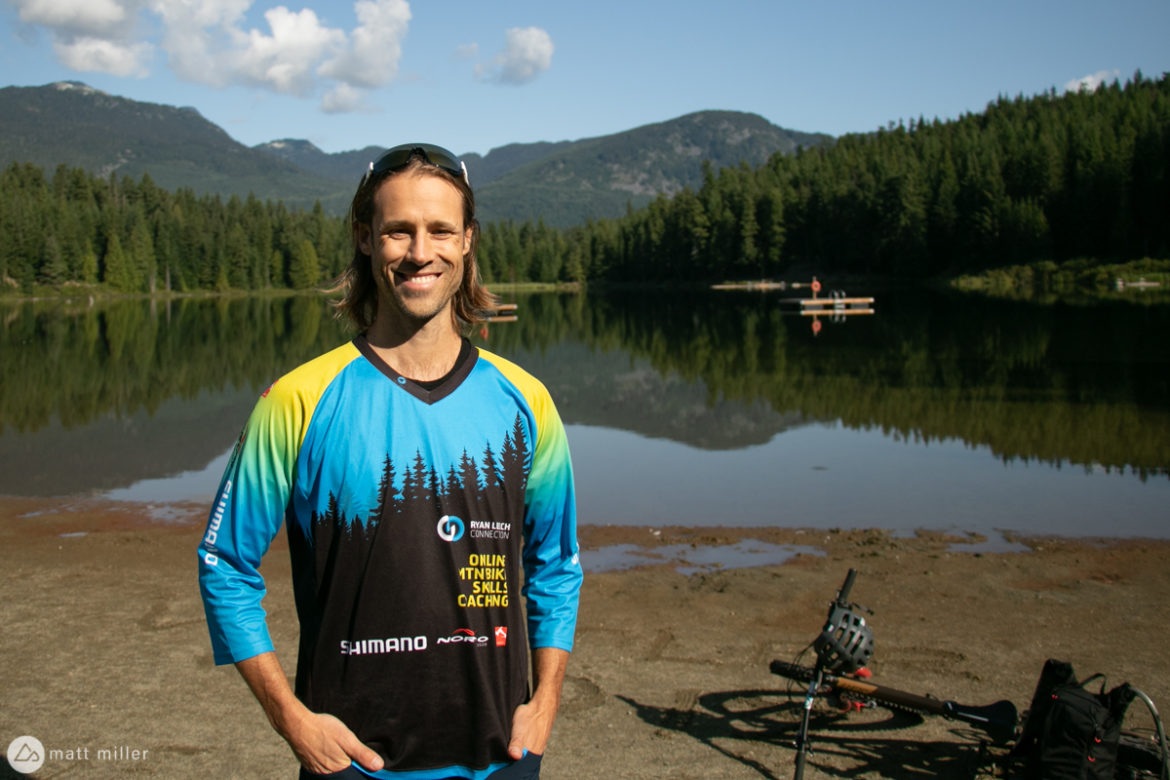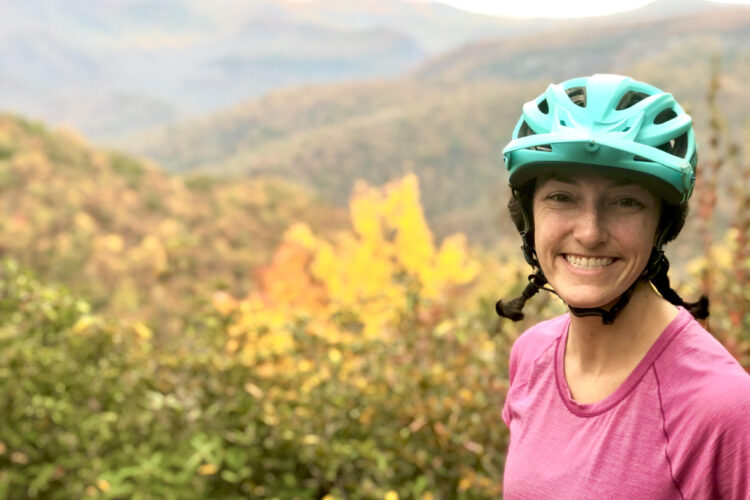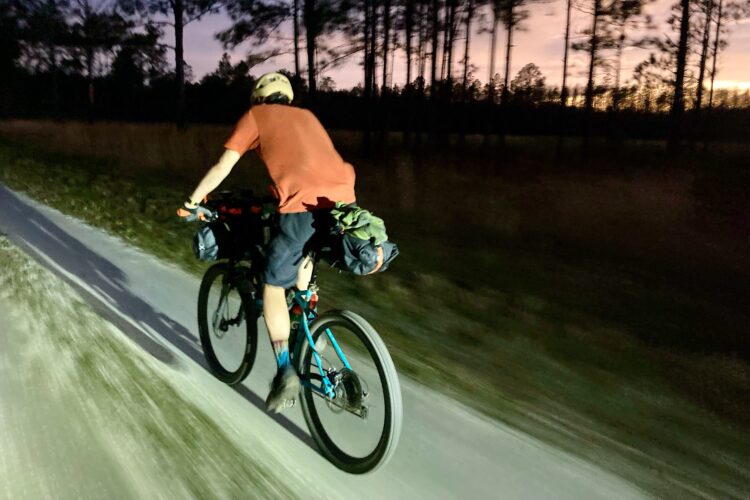Most of us immediately feel better, both physically and mentally, when we hang our bike up after a ride. Fresh air, serotonin, movement, blood flow, it all helps and often in the summertime between work and everything else that life has in store, riding is our only lifeline for stress relief and a workout.
While that’s all well and good, our bodies need more than mountain biking. Even though mountain biking can strengthen our quads, calves, and even our upper bodies, the basic position of being hunched over the top tube and handlebars can be problematic.
It means a forward rounded back and a tight chest and shoulders. This can lead to back and shoulder pain. Hip flexors aren’t worked through their full range of motion (especially for those with a desk job) and can lead to hip and back pain.
To get a better idea of what we as mountain bikers can do to counteract musculoskeletal issues from riding, we sat down with Ryan Leech during Crankworx Whistler to hear his favorite post-ride yoga poses.
Ryan has been a pro mountain biker for 20 years and has ridden everything from cross-country to downhill, but is most known for his trials riding. He was also featured in the iconic freeride series, Kranked, as well as several other films.
These days, Ryan has dialed his riding back a little, but is still as busy as ever. He runs the Ryan Leech Connection, an online coaching center and community, which focuses on mountain bike skills, and is supported by a dozen other coaches.
Ryan picked up yoga as a way to deal with mountain bike related injuries, and is now a certified yoga instructor.
Why is yoga important for mountain bikers mentally and physically?
In my experience, practicing yoga made me much more aware of all aspects of my body — the different joints, and muscles. I became more intimate with how my body felt, and the feedback I was getting from my body. That awareness followed me into my mountain biking and thus informed how I rode. I began to listen to my body’s messages while riding.
I have abused my body a lot less since starting yoga. A part of it was the practice of observing not only my body but my mind. The meditative aspects of yoga and getting into a meditation practice, that allowed me to take more of a third-person perspective of not only the awareness and feel of my body, but of my drives, motives, goals, and my ego. Since I could take a step back from that, I could make better choices in what I was riding. I would often choose not to ride a scary bit of trail that didn’t feel good to me. That’s an ability that I didn’t have before yoga. Part of that is growing more mature, but yoga certainly sped that up.
It’s kind of obvious that yoga helps to balance out the body from mountain biking and strengthen muscles that don’t get used for mountain biking, and yoga resets your body so that it can continue moving in its full range of motion rather than gradually over time getting tighter and stiffer. It helps you ride more, ride longer, and the other mental aspects I think are more powerful.
Are you more mentally composed on the trail thanks to yoga?
When you take the view of longevity in the sport of mountain biking, then yes. Before yoga, I was very composed and focused as a rider. I became a pro rider and excelled at the sport before I found yoga, so I can’t credit yoga for giving me more focus during those situations.
But, in those situations before yoga, I had more crashes, I abused my body more, I had a lot more aches and pains, and post-yoga, I had more composure and would make decisions that prevented me from crashing as much.
What are some of the more common muscle tightnesses and imbalances that mountain bikers form?
Certainly a lot of neck issues, lower back tightness, the quads get pretty coiled up and the same with hamstrings, which all link to knee health. The wrists and forearms are a big one too.
It’s also a closed position in mountain biking. Our shoulders collapse forward, our chest closes, we’re hunched forward, we’re rounding in the spine, and always in the flexed position, but with extension in the neck. We spend so much time on our bikes, we’re trained into that position, and that’s the major problem I see.
Ryan’s top three recommended post-ride yoga poses for mountain bikers
Happy baby, beginner friendly

The happy baby pose [is] a beginner pose, and something that everyone can do. It’s not just a static pose, but you can explore, and wriggle, and move around, and massage. You can straighten one leg more and then the other, which gets into the hamstrings. You can move your ankles a little bit and get some articulation there. If you’re grabbing your feet, you can stretch your calves. As you’re pulling the knees down and wide, you’re getting some external rotation in the hips, which is a nice break from the linear motion of mountain biking.

Often, a yoga pose for me after a ride is I get down on the ground and wriggle around, and go to the positions intuitively, and I always end up doing happy baby and it feels so good. Part of it is based on that intuitive sense, and a big part of happy baby is practicing loosening the neck, and wherever I grab, I roll the shoulders back and down and set them in their sockets, and practice staying wide.
Thoracic spine stretch, intermediate level
This one doesn’t really have a name. [It’s focused] on the thoracic spine, but gets a rotation on the entire spine. This specific stretch feels amazing too and has the challenge of changing your state and you really have to focus on exhales, and let go, and relax.
When you do that and stay in this pose for a minute or two, the mobility reset is unbelievable. This is a go-to pose and if I do one stretch before or after a ride, this is the one. Breathing into this one is huge for me, since I’ve had a lot of back issues.
You can also add a more advanced quad stretch variation. Rather than keeping the underside leg extended, for an added challenge, bring the foot up and grab it with your hand. In both poses, keep the shoulders and back glued to the ground. The overside hip should extend to the side for a stretch in the hips and thoracic spine.
Modified lizard pose, advanced
This one gets into a quad stretch as well and is kind of like a pigeon variation, and gets into the hip adductors, the glutes, the quads, but the biggest things is that it gets into the front body and opening the shoulders and the neck.
To get into this position, start with one leg forward and one back, like a lunge. Whichever leg is forward, put the opposite arm in front. If you’re unable to reach your back foot with your hand, close the distance between the legs a little, or just keep the foot down, bring your hand into your lower back in a bind, and focus on the chest stretch.

Open the chest wide and peel the shoulders back. Lift the inside of your foot off the ground for a deeper stretch in that hip. Stay in the stretch(es) as long as they feel good.
To connect with Ryan Leech and see more yoga poses, yoga classes, and online skills clinics, visit the Ryan Leech Connection.

























